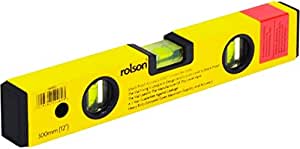How to Create a Gallery Wall
- Emily Hadley
- Feb 14, 2024
- 3 min read

I have created many gallery walls over the years and the key message from me is to have fun with it! Don’t feel you have to have the perfect gallery wall instantly. A slow growing collection will ultimately have a much more interesting story behind it. You can see my previous blog post for ways to source affordable art here.
The beauty of a gallery wall is that it can be easily switched around as you find new pieces to add, for example a postcard from a friend, a map of that place you just had your favourite ever holiday or a black and white photo of your children. Keep a pot of wall filler and a small amount of the paint used on the wall in the first place for quick and easy touch ups when moving pieces around.
In my opinion there are no rights or wrongs when creating a gallery wall, pretty much anything goes and the trick is to just go for it! All art and design is subjective after all, some people prefer a linear, matching, neutral style whereas others like a jam packed, eclectic, hardly any wall showing vibe! I’m there for either look and anything in between. You just need to have a vision before you begin, Pinterest is a good place to start; I have a gallery wall board on my Pinterest here.
Here are a few key things that you might want to think about in the planning stages of your gallery wall.

Consider shape, size and scale
A selection of different shaped and size pieces is the most interesting way to make up your gallery wall. I prefer some portrait and some landscape orientated works and some small and large pieces. At this point, also consider different objects to create visual interest and variety. Mirrors, reclaimed shop signs, hats, masks and plates can add an eclectic and personal feeling to your home.

Background Contrast
When considering work to include on your gallery wall, think about the colour of the wall. It is great if the frames contrast with the background to allow your artwork to sing. You may want a gallery wall where the frames all match and the artwork is fairly muted or maybe monochrome. Alternatively, you may wish to produce a gallery wall where the look is maximalist and there are many clashes of colour and texture. If that is your aim then really go for it!

Measure the wall space
Do you want the gallery wall to exist only in a certain area of the wall? Do you want it to go from floor to ceiling or from end to end? Once you have decided, mark the area out on a floor so you can plan how you want to arrange the pieces. I have seen others cut out pieces of paper and stick to the wall to help work out where the paintings are going to be but I favour a slightly more haphazard method of moving the pieces into place from my floor arrangement onto the wall!

I measure where the hook is in relation to where I want the frame to sit and make a small mark for the tack/screw.

How to hang your artwork
NB. Before making any holes in walls it is super important to check there are no live wires or other utilities behind them.
If the artworks are fairly light, an easy way to hang them is command strips (like these) which are very popular with lots of people! This comes with a health warning though as we once hung an entire gallery wall using this method and were woken later that night by a loud crashing noise. We sleepily dashed downstairs to discover a heavy, glass fronted frame had come down taking a number of other pictures with it!
These days we favour using small tacks or nails in a structurally sound bit of wall for a light item or a screw with a raw plug if the wall isn’t in such good repair or if the artwork is heavy and/or worth a lot of money! A picture hanging set like this one is very helpful. Another versatile way we hang artwork (although this doesn’t work for a gallery wall) is using picture rail hooks and wire adjustable hooks that you can source here and here.

So, now you have all the info! When you are ready, just go for it and have fun!

















Comments